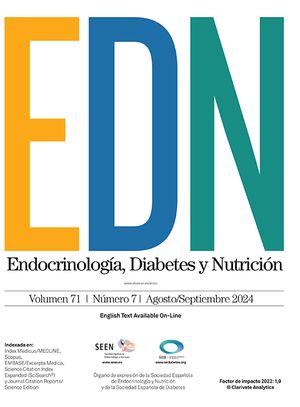El hipotiroidismo subclínico, definido por la presencia de concentraciones elevadas de tirotropina en presencia de concentraciones normales de tiroxina libre es un trastorno frecuente en la población general, especialmente en mujeres de edad avanzada. Los pacientes con disfunción tiroidea subclínica moderada pueden evolucionar hacia el hipotiroidismo franco, hacia la estabilización de sus valores de tirotropina o hacia la normalización de la función tiroidea. La probabilidad de desarrollo de hipotiroidismo definitivo es superior en los pacientes que presentan concentraciones de tirotropina superiores a 10 mU/l, autoinmunidad tiroidea positiva y en los pacientes con enfermedad tiroidea previa o con tratamientos antitiroideos previos. Entre las rezones aducidas para el tratamiento farmacológico de los pacientes con hipotiroidismo subclínico se encuentra el alivio sintomático, la mejoría del perfil lipídico, la mejoría en la función cardíaca, los efectos beneficiosos sobre la aterosclerosis prematura y la prevención del desarrollo de hipotiroidismo franco. El tratamiento con tiroxina, sin embargo, no está desprovisto de inconvenientes. Entre ellos, se encuentra la ausencia de beneficio, la necesidad de medicación y revisiones médicas de por vida y la posibilidad de desarrollo de tirotoxicosis iatrogénica con los consecuentes efectos adversos sobre el hueso y el sistema cardiovascular. La mayoría de los expertos y sociedades científicas recomiendan instaurar tratamiento con tiroxina en pacientes con concentraciones de tirotropina superiores a 10 mU/l. En pacientes con concentraciones inferiores a este umbral se valorará también la posibilidad de tratamiento, especialmente en presencia de algunas circunstancias como embarazo, síntomas sugestivos de hipotiroidismo, bocio, anticuerpos antitiroideos positivos o elevación progresiva de las cifras de tirotropina.
Subclinical hypothyroidism is characterized by elevation of thyrotropin (TSH) concentrations with normal circulating concentrations of thyroid hormones. This mild thyroid failure is common in the general population, especially among elderly women. Patients with moderate subclinical hypothyroidism may progress to overt hypothyroidism, although other patients may show normalization of TSH concentrations or persistence of elevated serum TSH. The main risk factors for the development of overt thyroid failure in patients with subclinical hypothyroidism are TSH levels greater than 10 mU/l, thyroid autoimmunity, and a history of thyroid disease or thyroid treatments. Pharmacological therapy can be started in subclinical thyroid hypofunction to alleviate symptoms, improve lipid profile and cardiac function, ameliorate premature atherosclerotic changes, and prevent progression to overt disease. Replacement therapy with thyroxine is not without risks. Some concerns are the lack of benefit, and the need for life long medication and medical monitoring. Over-replacement with thyroxine is associated with the known adverse effects of thyrotoxicosis on bone mass and the cardiovascular system. Most authorities and scientific societies recommend starting thyroxine replacement therapy in patients with TSH concentrations higher than 10 mU/l. Patients who are pregnant, or who have symptoms of hypothyroidism, goiter, positive thyroid autoimmunity or progressive elevation of TSH levels can also to be considered for therapy, even when TSH concentrations are below 10 mU/l.




